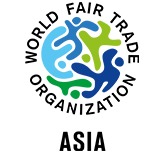
Author: Bianca Caruana, The Altruistic Traveller
On November 8th 2013 category 5 Typhoon Yolanda decimated the Eastern Visayas region of the Philippines, leaving catastrophic carnage to some of the Philippines poorest regions. While the city of Tacloban wore the brunt of the storm and received the most media attention, Typhoon Yolanda ravaged many other small islands in the region, reducing them to rubble. One of those islands was Kinatarcan.
Kinatarcan is a small island located off the northern coast of Cebu, part of the municipality of Santa Fe. A beautiful, untouched region of the Philippines where communities make their daily living off the surrounding seas, and self-sustainable farming. However on that day in November 2013, their whole lives would change forever.
“We thought it was the end of the world, the cyclone destroyed all our fishing boats and all our nets. We had nothing left,” says Margarita, as she was brought to tears speaking about the struggles of that dreaded day.
After the abolition of the storm, many NGO’s came to the assistance of Margarita and her community. Caritas offered their services to rebuild homes, but as valuable as that was, rebuilding homes was not going to be enough for the people here. Before Yolanda their livelihood was the sea, they would use their boats to fish and live off the oceans. That livelihood was now paved with a path of obstacles, leaving the community vulnerable and fearful of what may come.
Southern Partners and Fair Trade Centre (SPFTC) heard about the devastating Typhoon and visited the area soon after it had hit landfall. They witnessed an unimaginable destruction and, with the help of local NGO’s, begun to work on a sustainable method of rebuilding.
SPFTC partnered with a faith-based NGO, the Santo Nino de Cebu Augustinian Social Development Foundation(SNAF) to develop a sustainable and integrated sustainable development plan for the island. Thus, the Kinatarcan Integrated Development (KID) Plan came into existence.
Prior to Yolanda the community farmed only for their consumption, and it was here where SPFTC recognised an opportunity for increased production. The location and climate of Kinatarcan is an optimal area to grow the enduring, nutrient-rich plant, Moringa, a plant that can withstand direct heat with minimal water, and one that is becoming increasingly popular in the consumer market.
“Moringa is very easy to grow, and with many households on the island already growing Moringa plants in their gardens we saw this as an opportunity to create an alternative livelihood for the community, aside from fishing” Nadette, production officer for SPFTC, explained to us how the group spent almost a year with the women on the island, training them in production practices, food safety standards and agricultural methods. 1 year on after Typhoon Yolanda, the women of Kinatarcan had renewed hope for the future.
By then SPFTC had raised enough funds to build a drying hut on the island so that the women could pick, wash and dry their own Moringa to sell to SPFTC and be transformed either into flakes or into powder. This provided wages to the communities, empowering women who only 1 year before had relied solely on the work of the men in their community.
As I spoke with the women on the island I sensed their long struggle for independence. “We are so thankful for the help of SFPTC. We have been able to rebuild our lives after such a horrible time. ”
The community still faces daily struggles more than 2 years on after Yolanda. El Niño has prevented rain for over 8 months and water is scarce; the temperature of the oceans is warmer resulting in a decrease in fish numbers; families are still rebuilding their homes, living in temporary shelters. Yet aside from all these hardships the women still have a reason to smile. Their relationship with SPFTC and WFTO Asia has given them a new livelihood, one they are proud of and one that will provide them with a brighter future in years to come.
“For now we just pray for the rain so that we can fill our next batch of orders, all the way to Italy.”
(Image credit: Bianca Caruana)


